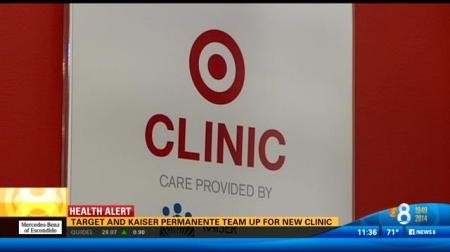Venture capital investor Lisa Suennen provides her perspectives on the five big trends that she believes will offer the most opportunity for those smart enough (and lucky enough) to play them the right way.
Oh, there’s a lot of opportunities
If you know when to take them, you know?
There’s a lot of opportunities
If there aren’t, you can make them
Make or break them
-Pet Shop Boys, Opportunities (Let’s Make Lots of Money!)
I am fortunate in that I get asked to speak at a lot of events, public and private. It is a great opportunity to hang out with smart people and tell the world my view of how things should be. One of the most common questions I get asked at these events is this: if you were investing in the healthcare world today, where exactly would you be placing your bets?
I get asked this because I spent much of the last couple of decades being a healthcare venture investor, but also because I am still fortunate to be at the nexus of a lot of interesting healthcare companies and developments at a particularly interesting time. The scope of market change in healthcare is big and fast, at least as compared to the last 25-30 years since I started in the field. And if you are an investor, massive market changes make you salivate. It is the rare established large company that survives this kind of market upheaval, and that means there is a big, fat world of growth available to the upstarts that are able to cook up their own batch of secret sauce and pour it on the waiting dish of market demand.
I was in a really interesting meeting recently with representatives from a number of large family offices and related entities, all of which have an interest in exploring where the best money-making opportunities are across the big wide world of healthcare. Once again, this question came up, “if you had money to invest right now in healthcare, where would you put it?” So I figured I’d reiterate my answer here for those with interest (or those who feel a burning desire to give me money).
Note that I automatically rule out deep science-based drug/genomics/biopharma type stuff, because that is really not my bailiwick. My science degree is in political science, so you can understand why. That leaves me to favor ideas that capitalize on five meta-trends that are happening throughout the American healthcare system and which, in almost every case, also have correlates or are directly relevant outside of the U.S. as well.
Here are the five big trends that I believe offer the most opportunity for those smart enough (and lucky enough) to play them the right way:
1. Migration of the locus of care from the hospital to ambulatory settings, including the home.
There is much talk about “the medical home” and it seems to me that this should be the actual home whenever possible. Short of that, hospitals are under so much pressure due to cost and inefficiency that their best remaining business model might be burning down the buildings and collecting the insurance money. Meanwhile, all manner of interesting ambulatory and home-based services and technologies will revolutionize how, where and when people access care. I note that recently, Kaiser Permanente announced they will open clinics at Target Stores. I rest my case.

2. Providers are becoming payers, or at least financial and clinical risk managers.
And speaking of medical homes, or ACOs or whatever entity or acronym is popular at the moment of conversation, it is irrefutable that the provider community and big health systems in particular are getting a crash course in the world of insurance and coming to school without the tools to succeed.
While most provider organizations are still making most of their money through old school fee-for-service, those days are clearly numbered for the bulk of them. Everyone is talking about the shift from volume to value and there is real money to be made in providing the tools and services necessary to make that shift successful. The last time the industry tried this, in the provider practice management (PPM) days of the 1990s, the provider world was rocked by bankruptcies borne out of poor risk management (among other things). Somewhere out there students may be undertaking an archaeological dig of the ruins of those PPM societies, Pompeii-style. Today we have the technology and know-how to make this work better, albeit the secret sauce is in helping guide the culture change that is surely a necessary ingredient in the recipe for success.
If only it were this easy
3. Patients are becoming consumers and, as such, looking for a true retail experience a la Amazon.com or Nordstrom.
People are armed with money (often huge deductibles that they must spend down before accessing their actual insurance benefits) and an expectation that when they spend that money they will get good, or at least comprehensible, services. When you go to Amazon, you can identify what you want from a full array of options, compare it, get reviews, purchase it and get it conveniently delivered with a few clicks and a personalized, low hassle experience. Anything that can help healthcare follow that same model will surely prosper. Anything that makes consumers feel like they know what the heck is going on will make them weep with gratitude.
4. Pharmaceutical and medical device companies are looking for solutions beyond the pill/widget, by which I mean products, technologies and services that make traditional devices and drugs more meaningful, data-driven and personalized.
Recognizing the increasing role of the consumer, these companies are looking for tools to establish that relationship and to expand their brand beyond the doctor-salesman relationship. These companies are also looking to enhance revenue models in a world of generics and in recognition that payers will provide richer reimbursement for better management of diseases, not just momentary symptom relief.
5. And all the while, the population is aging.
For the next 20 years we will be watching the Baby Boomer cohort move like a big meal through a proverbial snake. There is no opportunity larger than ensuring that this massive population’s healthcare demands don’t tank the economies of most of the leading nations around the world. And the challenge is particularly interesting since this group has far less experience and comfort with the technologies that might make their lives better. Thus, this is a real opportunity for consumer-friendly solutions that capitalize on the four concepts noted above in a market that represents about 1/3 of the US population and similarly large numbers among our global economic partners. Healthcare entrepreneurs: hug a grandma, it may be the best money you ever make.

Our aging population
I am sure that others have lists of investment ideas that are far more specific than these, but to me it is good to step back and look at ideas through the lens of the big trends rather from inside smaller micro categories, such as wearables, telemedicine, and/or digital therapeutics. Any one of these might be the nouns associated with great investment opportunities, but if you are looking for the world’s best wearable, you might just miss the world’s best implantable or non-wearable passive sensor delivering a better solution to the same problem.
Recently I was working with a group that is developing a new venture fund and where some of the participants in the process were trying to get extremely specific about the kinds of deals they were going to seek. They were developing long lists of criteria and drilling down into subcategories to try to develop a list of investment ideas that would make the process of vetting deal flow “easier.”
While it’s important to know the themes you think important and to understand key markets within those areas of interest, if you get too micro, you will miss the big ideas that came out of nowhere. The greatest innovations often take you by surprise—you just didn’t see coming that particular way of solving a market problem. Often those are the best opportunities and yet they don’t lend themselves to being on a checklist, unless the checklist includes “wild idea no sane person would have thought to do, but now that I think about it…”

I’d welcome your thoughts on what I missed and where you think the greatest investment opportunities are today. Use the comments section and weigh in!
This article first appeared on VentureValkyrie.com, and is reprinted with permission. For more expert insights from Lisa Suennen, follow her on Twitter@VentureValkyrie, on her blog, and through her book: Tech Tonics: Can Passionate Entrepreneurs Heal Healthcare with Technology?
The nuviun blog is intended to contribute to discussion and stimulate debate on important issues in global digital health. The views are solely those of the author.


